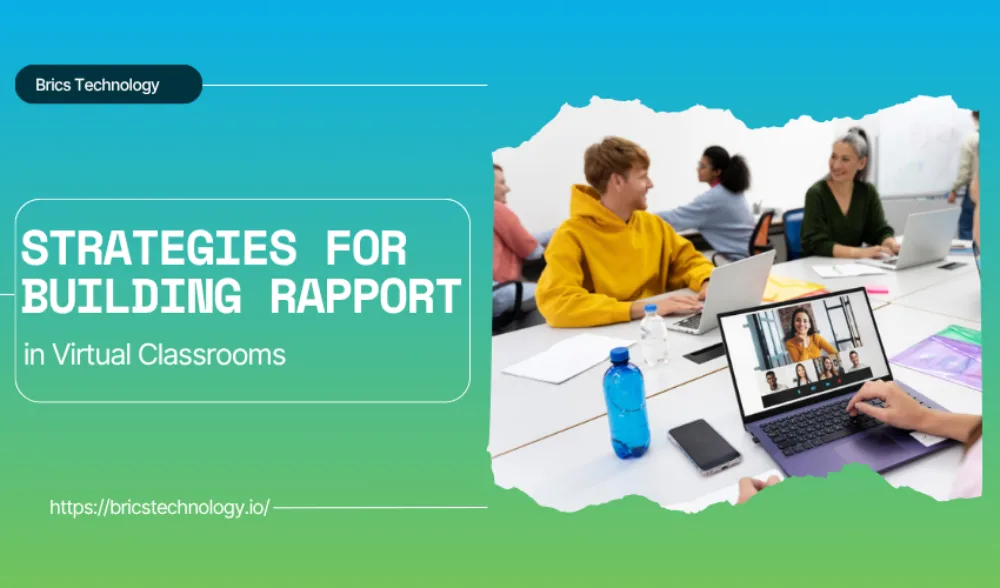Strategies for Building Rapport in Virtual Classrooms

The rise of virtual learning has changed the way educators and students interact. While online education brings flexibility and accessibility, it also presents new challenges, especially when it comes to building meaningful connections. In traditional classrooms, rapport naturally develops through face-to-face interaction, body language, and spontaneous conversation. But in a virtual setting, these elements can feel distant or even absent.
Despite these barriers, developing strong student-teacher relationships is not only possible in virtual classrooms, it’s essential. When students feel connected, supported, and understood, they are more likely to participate, stay motivated, and perform better academically. Building rapport fosters trust, encourages communication, and transforms a digital space into a true learning community.
So how can online educators create these bonds in a screen-based environment? Below are practical strategies to cultivate rapport, foster engagement, and make every student feel like a valued part of the virtual classroom.
Prioritize Personal Introductions and Icebreakers

First impressions set the tone for the entire learning experience. At the beginning of a course or term, make it a priority to introduce yourself not just as a teacher, but as a person. Share your background, hobbies, and teaching philosophy. Use storytelling to humanize yourself and invite students to do the same.
Interactive icebreakers help students get to know each other and build early connections. These can include games like “Two Truths and a Lie,” digital scavenger hunts, or fun polls. When students learn about each other’s interests, they feel more comfortable participating and forming peer relationships.
Creating a short video welcome message or hosting a live meet-and-greet session helps break the initial awkwardness and sets a warm, approachable tone for the rest of the course.
Maintain Consistent and Supportive Communication
Communication is the foundation of rapport in any classroom. In virtual learning environments, where tone and nuance can be easily lost, consistency and empathy are even more important.
Check in regularly with your students, beyond academic performance. Ask how they’re doing, what challenges they’re facing, and what kind of support they need. Whether through weekly emails, announcements, or one-on-one messages, these check-ins demonstrate that you care about them as individuals.
Use a conversational tone in your written communication. Avoid overly formal or robotic language, and instead, write as if you were speaking directly to the student. Phrases like “Let me know how I can help” or “I’m really proud of your effort this week” go a long way in showing support and empathy.
Encourage Participation with Low-Pressure Opportunities

Some students may feel anxious or unsure about speaking up in virtual settings, especially early in the term. Offering low-pressure ways to engage can ease students into participation and boost their confidence.
Start with non-graded discussion prompts or casual “question of the day” posts. Use platforms where students can respond via text, emoji, or even video, allowing them to express themselves in their preferred format. Over time, this builds a culture of participation that feels safe and welcoming.
Be responsive and encouraging in your feedback. When students see that their contributions are valued, they’re more likely to continue engaging. Highlight insightful comments, thank students for their input, and gently draw quieter students into the conversation with open-ended questions.
Use Collaborative Tools to Create Shared Experiences

One of the most effective ways to build rapport in virtual classrooms is by creating shared experiences that foster teamwork and mutual support. Group projects, peer reviews, and real-time collaboration activities not only enhance learning but also build connections among students.
Digital tools like shared documents, whiteboards, or interactive slideshows allow students to work together regardless of location. Assigning specific roles within group activities (e.g., researcher, presenter, note-taker) helps ensure that all students are involved and contribute meaningfully.
Teachers can also leverage Notion classroom tools to organize these collaborations more effectively. From project planning templates to student group dashboards, Notion makes it easy to track progress, assign responsibilities, and provide shared access to learning materials. These tools bring structure to collaboration, making it more efficient and engaging.
Show Authenticity and Empathy
Students can sense when a teacher is being authentic. Sharing your own experiences, admitting when you don’t have all the answers, and responding to students with genuine care builds trust and credibility.
When students express concerns or challenges, academic or personal, respond with empathy. Validate their feelings, offer support, and provide flexible solutions when possible. In uncertain times, empathy becomes a powerful connector.
Use humor appropriately to create a more relaxed and enjoyable atmosphere. A well-placed joke or light-hearted comment can ease tension and remind students that learning can be fun, even in a digital format.
Provide Personalized Feedback and Recognition
Nothing builds rapport like personalized attention. When giving feedback, address students by name and reference specific parts of their work. Highlight their growth, effort, and unique contributions. This shows students that you see them as individuals, not just names on a screen.
Take time to celebrate successes, big or small. Whether it’s mastering a difficult concept, improving attendance, or consistently participating in discussions, recognition reinforces positive behavior and strengthens relationships.
Tools like Notion classroom tools can help track student performance and behavior over time. Tutors and teachers can use progress logs, private notes, and customized checklists to ensure no student goes unnoticed. With everything organized in one digital space, it becomes easier to personalize interactions and keep tabs on individual needs.
Create a Culture of Respect and Inclusion
Rapport thrives in environments where everyone feels respected and included. Set clear expectations around digital etiquette and foster a classroom culture that values diverse voices and perspectives.
Encourage students to listen actively, respect differing opinions, and support each other’s efforts. Provide opportunities for students to share their experiences and bring their cultural identities into discussions and assignments.
Model inclusive behavior in your own teaching. Use inclusive language, share diverse resources, and highlight contributions from different cultures and communities. When students feel represented and respected, they’re more likely to engage openly and form stronger connections with both peers and instructors.
Conclusion
Building rapport in virtual classrooms may require more intentional effort than in traditional settings, but the rewards are well worth it. With the right strategies, focused on communication, collaboration, empathy, and personalization, educators can foster genuine connections that enhance learning and student well-being. As digital education continues to evolve, strong relationships will remain the foundation of every successful virtual learning experience.
Catagories
Recent Post
- From Biometrics to Blockchain: Reinventing Identity Verification
- From Idea to Income: How to Build and Sell AI Soulmates
- Supporting Employee Wellbeing in the UK: What Businesses Often Overlook
- The Role of AI Development Companies in Enhancing Security for Brics Coin Transactions
- Designing Smart Cancellation Flows: Best Practices for SaaS
